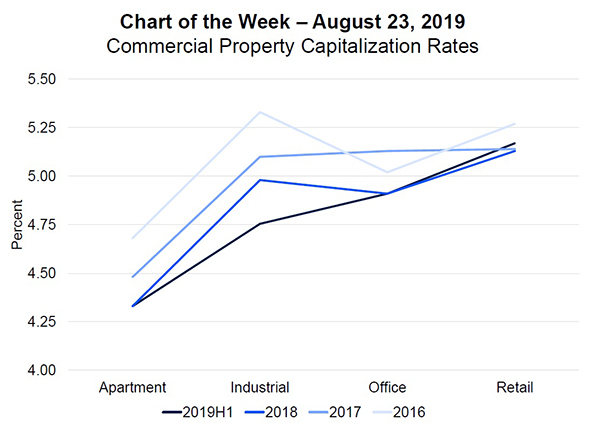
MBA Chart of the Week: Commercial Property Capitalization Rates

Source: National Council of Real Estate Investment Fiduciaries.
Commercial real estate values are a function of a property’s income and the capitalization (cap) rate. Essentially the inverse of a price-to-earnings ratio, cap rates are a gauge of the yield investors demand to put their money into commercial real estate–with a lower cap rate demonstrating higher investor interest in each dollar of current income.
As yields in virtually all investable asset classes have fallen in recent years, so have cap rates. But beneath the record low rate for all commercial and multifamily properties, recent cap rate trends tell an important story about how investors view different property types.
In recent decades, apartment buildings have consistently had the lowest cap rates–a testament to investors’ interest in the property type–and those rates have generally fallen in recent years. Retail properties are at the other end of the spectrum, commanding higher cap rates that–in the past three years–have not seen the same overall declines that other property types have.
But most dramatic is the story cap rates tell about industrial properties. In 2016, industrial cap rates were the highest of the major property types, averaging 5.3 percent. Those rates have fallen each year and in Q2 2019 came in at 4.8 percent, lower than those for either office and retail properties. With vacancy rates declining and property incomes rising, investors can’t seem to get enough of industrial.
Jamie Woodwell jwoodwell@mba.org
